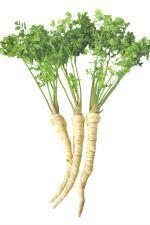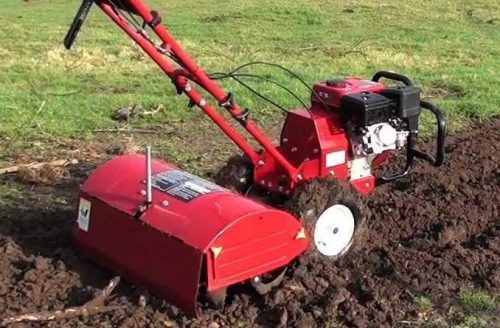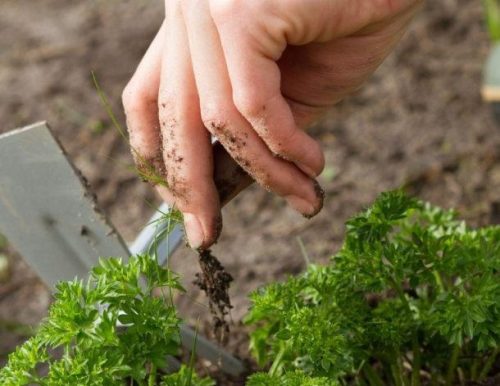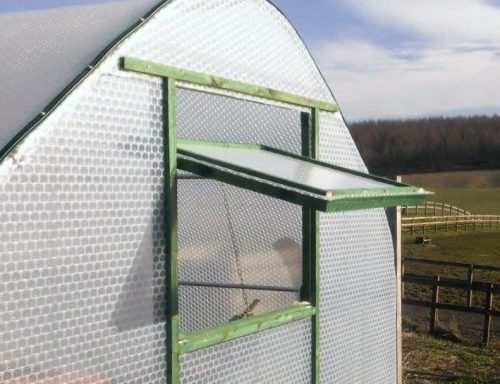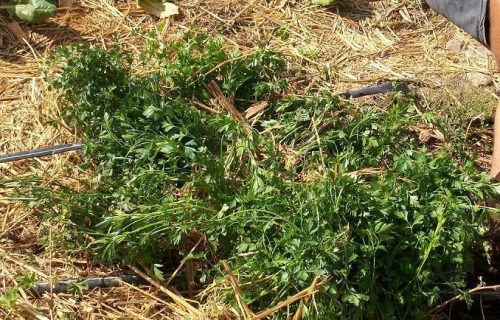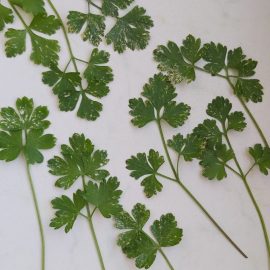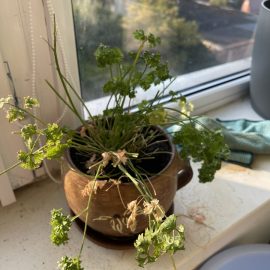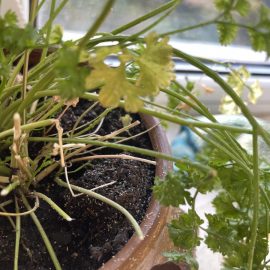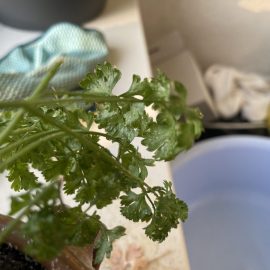Parsley, information about crop management
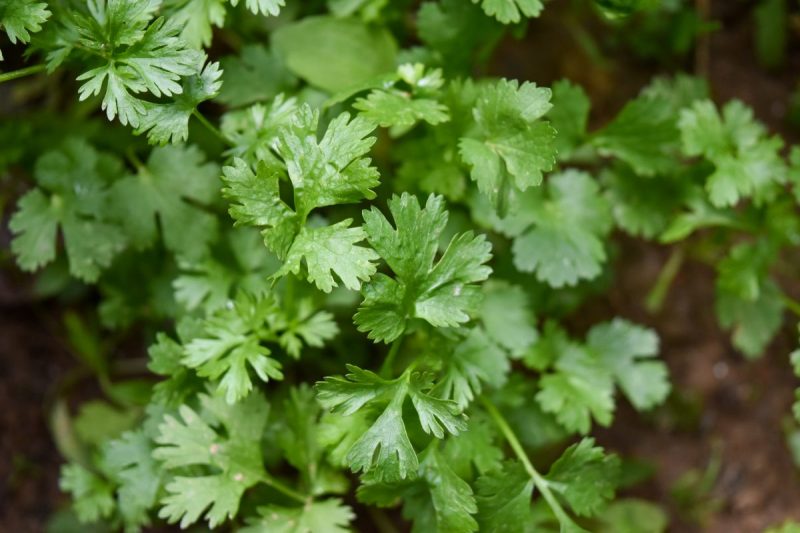
Parsley (Petroselinum crispum) is grown for its aromatic leaves, but also for its nutrient-rich root. It can be used fresh, frozen, or dehydrated. Parsley plants are also used for medicinal purposes. Parsley is native to the Mediterranean Sea. Originally, in ancient times, it was used as a medicinal herb by the Greeks and Romans.
Parsley, it is a biennial plant. In the first year, it forms a rosette of leaves and a thickened root, and in the second year, it forms a flowering stem. The root is tuberous, pivoting, conical, grey outside and white inside. The leaves are glossy, petiolate, pinnately septate. Leaves and roots have a reduced growth rate in the early stages of vegetation. The flowering stem reaches 1.5 m tall and is fistulous, edged, and strongly branched at the base. The flowers are small, hermaphrodite, of varied color. Pollination is entomophilous. The fruit is a pseudo achene of greenish-grey color.
Climate and soil requirements
The minimum germination temperature of parsley seeds is 2-3 degrees Celsius and the optimum growing temperature is 20-22 degrees Celsius. Young plants can withstand temperatures down to -8 / -10 degrees Celsius, and mature plants can withstand temperatures down to -25 / -28 degrees Celsius. It has high water requirements; it requires 75-80% soil moisture. Lack of water causes small roots. Insufficient light leads to qualitative and quantitative production depreciation. It is picky about soil. It prefers loose, light, deep, humus-rich soils with a weak acid-neutral pH.
Cultivation
Soil preparation
Soil preparation is done from autumn. As root crops generally use organic fertilizer from the previous crop, basic fertilization should be done following a chemical soil analysis. After fertilization, the soil is mobilized to a depth of 25-30 cm.
Sowing
It can be done in early spring or late autumn. Before sowing, the soil can be irrigated, using a rate of 250 m3 /ha. Do not water after sowing to avoid disturbing the seeds in the soil. To ensure uniform and rapid sprouting, the seeds should be kept in warm water (30-35 degrees Celsius) for 24 hours. It is possible to establish 3-4 rows per furrow, with a distance between plants of 5-6 cm per row. For one hectare of land, 4-4.5 kg of seed is needed. Seed can be treated before sowing.
Recommended products
-
You can find products on a different store
Change Store -
You can find products on a different store
Change Store -
You can find products on a different store
Change Store -
You can find products on a different store
Change Store -
You can find products on a different store
Change Store -
You can find products on a different store
Change Store -
You can find products on a different store
Change Store -
You can find products on a different store
Change Store -
You can find products on a different store
Change Store -
You can find products on a different store
Change Store -
You can find products on a different store
Change Store -
You can find products on a different store
Change Store -
You can find products on a different store
Change Store -
You can find products on a different store
Change Store -
You can find products on a different store
Change Store -
You can find products on a different store
Change Store -
You can find products on a different store
Change Store -
You can find products on a different store
Change Store -
You can find products on a different store
Change Store -
You can find products on a different store
Change Store -
You can find products on a different store
Change Store -
You can find products on a different store
Change Store -
You can find products on a different store
Change Store -
You can find products on a different store
Change Store
Pest and disease control
Diseases and pests can be controlled by applying fungicide and insecticide treatments specific to parsley crops. To avoid the appearance of diseases or pests resistant to pesticides it is recommended to alternate products with different active substances.
Weed control
It is recommended to carry out 3-4 manual or mechanical hoeings to loosen the soil and destroy weeds.
Care works
Parsley is sensitive to drought, so water regularly to keep the soil cool. In parsley cultivation, the most recommended method of irrigation is drip irrigation.
Gradual fertilization should be applied according to the number of leaf harvests. Thus, one fertilizer is applied for each harvest. It can be used NPK complex fertilizers or foliar fertilizers.
Recommended products
-
You can find products on a different store
Change Store -
You can find products on a different store
Change Store -
You can find products on a different store
Change Store -
You can find products on a different store
Change Store -
You can find products on a different store
Change Store -
You can find products on a different store
Change Store -
You can find products on a different store
Change Store -
You can find products on a different store
Change Store -
You can find products on a different store
Change Store -
You can find products on a different store
Change Store -
You can find products on a different store
Change Store -
You can find products on a different store
Change Store -
You can find products on a different store
Change Store -
You can find products on a different store
Change Store -
You can find products on a different store
Change Store -
You can find products on a different store
Change Store -
You can find products on a different store
Change Store -
You can find products on a different store
Change Store -
You can find products on a different store
Change Store -
You can find products on a different store
Change Store -
You can find products on a different store
Change Store -
You can find products on a different store
Change Store -
You can find products on a different store
Change Store -
You can find products on a different store
Change Store
Harvesting
Harvesting is done by cutting off the leaf rosette or pulling the plant out of the ground. The leaves must be harvested in dry weather. For winter storage the leaves must be mowed and dried. The roots can be harvested when they reach a size of 1.5 cm in diameter. In the second year of vegetation, the roots become hard and the core becomes woody.
Tips on growing parsley in protected areas:
The crop can be established by sowing or by planting roots. Sowing can be carried out from 15 July to 10 August. The sowing scheme is as follows: 20 cm row spacing and 5 cm between plants per row. For one hectare, 20-30 kg of seed is used. The seed can be treated before sowing. Before sowing the soil can be irrigated using a rate of 250 m3/ha.
Roots that cannot be marketed (with no commercial aspect) are used to establish a new crop. After being harvested, the roots are sorted and trimmed. For this purpose use roots with a diameter of 6-8 cm and 15-20 cm long. The best time to plant is late September and October. The planting scheme is as follows: 15-20 cm between rows and 5 cm between plants per row. The roots should be planted at a depth of 18-20 cm so that the soil covers them completely. Before planting, irrigate at a rate of 250 m3/ha.
Care works
If temperatures are low, plants can be covered with straw, pine needles, dry leaves, or polyethylene foil. This will ensure optimum soil moisture and temperature for the germination process. The mulch can also be kept on after plants have emerged to keep weeds at bay.
Parsley is sensitive to drought in the early stages of growth. Ensure constant soil moisture by repeated watering at short intervals.
The polyhouse foil must be kept clean to ensure maximum brightness. Ventilate the polyhouse to maintain an internal temperature of 10-15 degrees Celsius.
Parsley leaves can be harvested gradually by cutting off the large leaves on the outside of the rosette, without affecting the leaves in the central area of the bush.














































































































































































































































































































































































































































